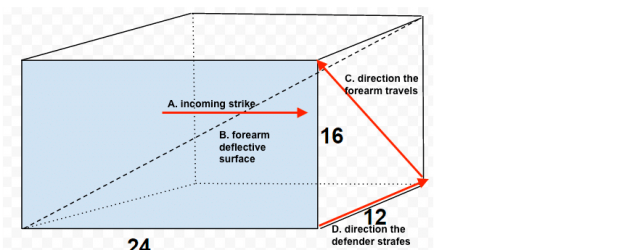lansao
Purple Belt
So that title is super long winded and I apologize. Also apologize if I'm posting too much and you all think I should take a breather, haha. Lots on my mind lately and just want to throw stuff out as it comes up.
One thought has been the use of cubic diagonals (of narrow rectangular prisms) as an approach to thinking about how deflection works and at what angles. Has anyone else found themselves using this idea when helping to explain hand positions like Tan Sao, Bong Sao, Fook Sao, and Lan Sao (or other analogies)?

One thought has been the use of cubic diagonals (of narrow rectangular prisms) as an approach to thinking about how deflection works and at what angles. Has anyone else found themselves using this idea when helping to explain hand positions like Tan Sao, Bong Sao, Fook Sao, and Lan Sao (or other analogies)?


